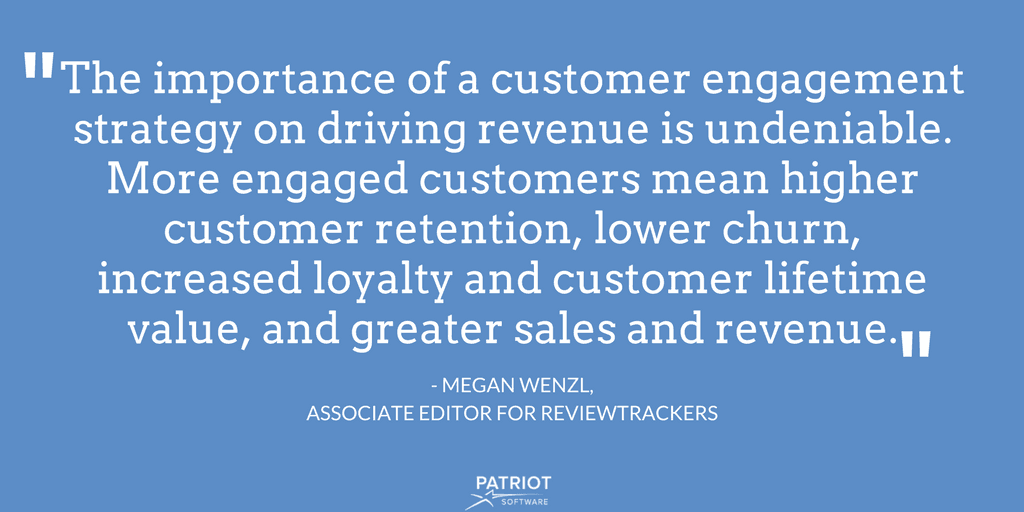Getting your first sale from business is a great milestone to accomplish. Once you have a steady stream of customers, it’s time to start thinking about growing. With a solid growth strategy, you can take your business to new heights.
Small business growth strategies give you a roadmap for expanding your company. A plan will help you reach your goals and, ultimately, raise your bottom line.
Types of business growth strategies
There is no one way of growing a small business. As a small business owner, you need to consider your options to see which is right for you. The following strategies for business growth could help you bring in more sales.
Sell more to current customers. Marketing to existing customers is a great business growth plan example for gaining more sales without acquisition expenses. Tap into your current customer base to learn what other consumer problems you could solve. Reach out to existing customers to announce discounts, events, and news happening at your company.
Expand your customer pool. You could market to new customer bases to increase sales. Do a market analysis on local consumers to come up with a marketing strategy. Communicate with potential customers who fit your target audience via social media, your website, and signage. Some growth strategies for small business include offering special perks to first-time customers and current customers who refer people.
Introduce new offerings. You might grow your business by adding new products or services. Look for additional offerings that complement your niche. Find out issues that need to be solved in your market and what you could provide to fix them.
Break into new markets. Expanding your market can help you grow your business. You might look for other niches that fit with your current offerings. For example, if you own a nail salon, it might make sense to also offer hair services. Or, you could open a second business location.
How to develop a business growth strategy
To grow your business, you need a business development strategy. Try these tips on creating a growth strategy for your small business.
1. Define your ideal customer
Your target market might not be the same as when you first started your business. Your offerings change, you learn what works, and you see who is interested in your business. Take a look at your current customers to understand details that appeal to your market.
Also, look for new niches that you might have missed initially. These areas of the market could be opportunities for growth.
Find out everything you can about your ideal customer. What are their interests? What issues need addressed? How much are they willing to spend? Use this information to market to target customers.
2. Define your business’s value
You need to convince consumers to buy from your business in order to grow. You do this by showing customers your company’s value. What do you offer that sets you apart from competitors? Your potential business growth strategies should stem from your unique selling proposition.
The thing that makes your business unique drives sales. Find out why consumers choose your business over your competition. And, take a look at repeat customers and those who refer more business to you.
How do you know what your customers value about your business? Usually, customers like their opinions to be heard, so ask them. Talk to your customers at the point of sale and ask if they found what they were looking for. Encourage customers to review your products and services on your website.
3. Review customer engagement strategies
Customer engagement encourages consumers to be interested in and buy from your business. You create experiences that foster relationships with customers. Many ideas for business growth strategies start with developing a base of loyal customers.
From the moment a prospect hears about your business, they form an opinion. You need to provide a positive experience starting at the first contact all the way through your sales pipeline.
Show customers you care by creating user-friendly processes and listening to them. Use social media to keep in contact with customers and address issues. Show that you’re willing to fix problems and answer questions. And, create content that is interesting and helpful to your market.

4. Cut costs
You need money when growing your business. Reducing current expenses gives you more capital to spend on growth opportunities.
As you operate your business, you learn how to do things more efficiently. See if you can reduce business expenses you currently make. You might be able to order less of an item or find a less-expensive option.
Form long-term relationships with your vendors. The more your vendors want to work with you, the better your payment terms will be. The same idea goes for lenders. Use one bank for business banking, and take advantage of the services offered.
5. Create objectives
One of the most essential parts of your small business growth strategy is a set of goals. You need to create a few key objectives to work towards. Come up with a specific time period for accomplishing goals. Review your efforts at the end of the period.
Use two to three quantifiable goals to track progress. Often, a growth rate goal is a percentage to increase your sales by. For example, you made $50,000 last year and want to increase sales by 10%. Your growth rate goal would be to make $55,000 next year.
You can use different metrics to measure the effectiveness of your small business growth strategies. Common metrics include increasing customer engagement, number of customers, offerings, and employees on payroll. Use the reporting in your accounting software to accurately measure your business growth metrics.
